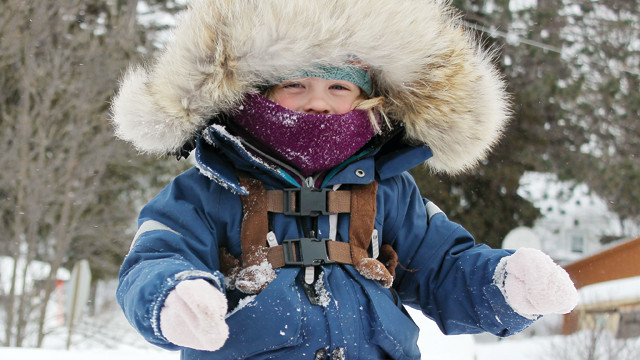Support the Timberjay by making a donation.
A season for the record books
North Country experiences second-coldest winter in a century
REGIONAL— Spring has sprung in the North Country, but you wouldn’t know it from your thermometer. It was 44 below zero last Saturday morning, in Embarrass, and most other reporting stations in …
This item is available in full to subscribers.
Attention subscribers
To continue reading, you will need to either log in to your subscriber account, or purchase a new subscription.
If you are a current print subscriber, you can set up a free website account and connect your subscription to it by clicking here.
If you are a digital subscriber with an active, online-only subscription then you already have an account here. Just reset your password if you've not yet logged in to your account on this new site.
Otherwise, click here to view your options for subscribing.
Please log in to continue |
A season for the record books
North Country experiences second-coldest winter in a century
REGIONAL— Spring has sprung in the North Country, but you wouldn’t know it from your thermometer. It was 44 below zero last Saturday morning, in Embarrass, and most other reporting stations in the area had temperatures well into the minus-30 degree range.
Even so, meteorological winter (which runs December through February) officially ended on Feb. 28. And what a winter it was. For the North Country, it was the coldest since 1978-79, and the second coldest since records have been kept in the area, beginning a little over a century ago.
At International Falls, which has the longest records in the area, this winter just missed out on the title of coldest ever, according to State Climatologist Pete Boulay. This winter’s average temperature was a chilly minus-2.7 degrees Fahrenheit, falling just short of the minus-2.9 degree average set in 1978-79.
But even that pales by comparison with Embarrass, where this winter’s mean, or average, temperature checks in at a frosty minus-5.5 degrees, according to meteorologist and climatologist Mark Seeley. Compare that to Fairbanks, in the Alaskan interior, where this winter’s average temperature was a comparatively balmy minus-1.0 degrees. “This is perhaps the first time that portions of Minnesota have reported a colder meteorological winter than Fairbanks, Alaska,” said Seeley.
While northern Minnesota typically has colder winters than many parts of Alaska, that’s not true of the Alaskan interior, which is consistently the coldest of any part of that state. A typical winter in Fairbanks includes an average December-February temperature of minus-8 degrees, but this winter was one of the warmest in Fairbanks in years.
While the North Country failed to reach a minus-50 degree reading (the region’s gold standard for extreme cold) this year, it was the persistence of severe cold that marked the winter of 2013-14. In Embarrass, for example, the thermometer had already dipped to minus-30 or colder on 30 days through Feb. 28, and the community has added two more days to that total so far in March. In Fairbanks, by contrast, the thermometer dipped to minus-30 or colder only 12 times.
The good news is that the worst of the cold is likely behind us. “That’s like an early October sun this time of year,” notes Boulay, and the return of the light accelerates as the equinox approaches on March 20.
Snow adding up
While this winter won’t rank particularly highly for snowfall, February’s heavy precipitation did set records and helped boost this season’s snow totals into the well-above-average category. Cook led the way with a record 36.1 inches of snow in February. Also setting monthly snowfall records were: Tower, with 29.3 inches, Babbitt, with 33. 3 inches, Embarrass, with 29.5 inches, Isabella, with 34 inches, and Orr, with 26.8 inches. February’s hefty snowfall, which added to the existing snowpack, has left impressive snow depths across the North Country, in excess of 36 inches in many cases. Meteorologists may claim that it’s spring, but it’s going to continue to look like winter in the North Country for many weeks to come.






